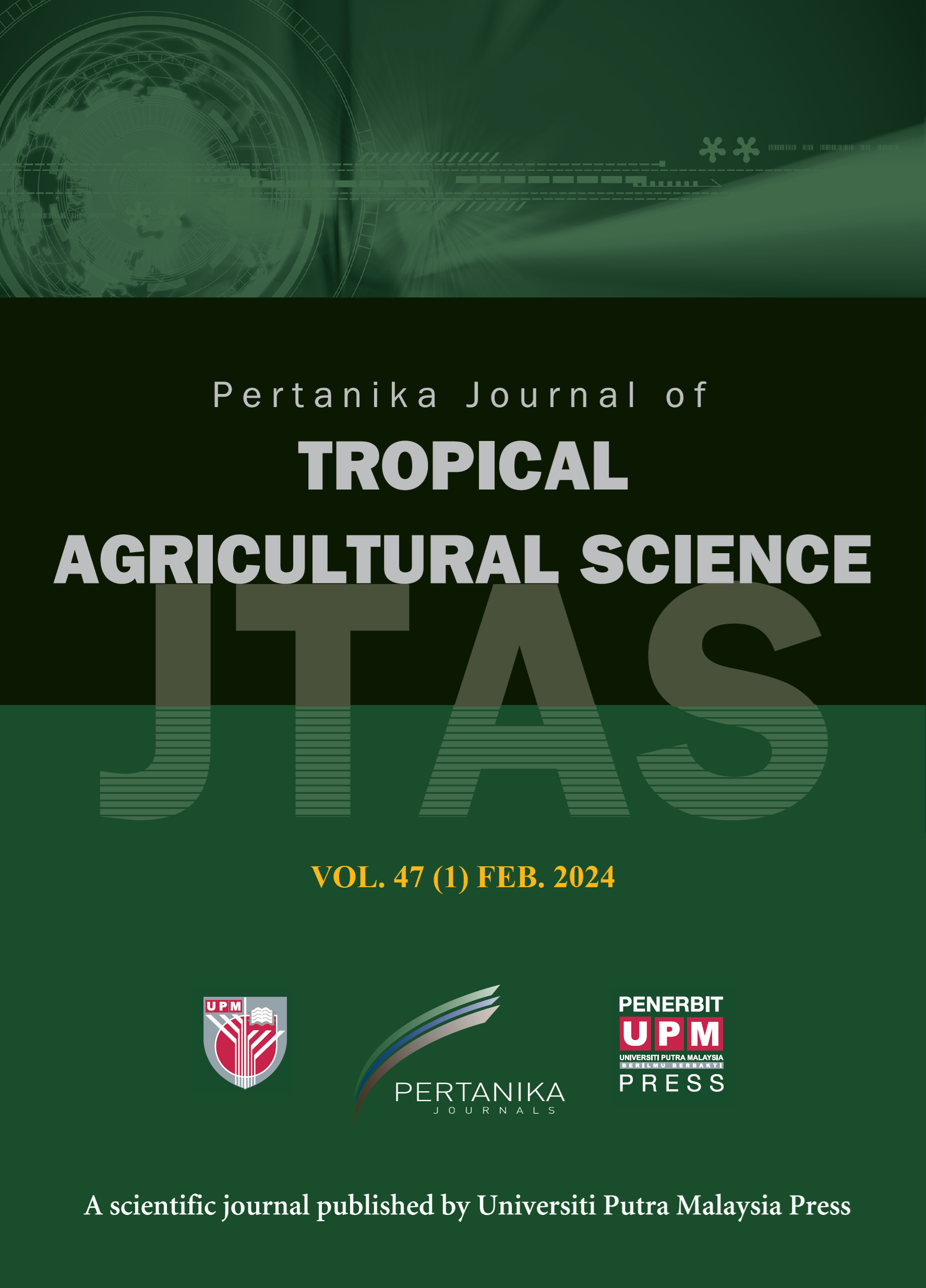PERTANIKA JOURNAL OF TROPICAL AGRICULTURAL SCIENCE
e-ISSN 2231-8542
ISSN 1511-3701
Effect of Growth Media Composition on Early Growth and Development of Moringa (Moringa oleifera L.) Seedlings
Wasiu Babatunde Akanbi, Rihanat Funsho Asafa and Mojisola Adeola Ojo
Pertanika Journal of Tropical Agricultural Science, Volume 42, Issue 1, February 2019
Keywords: Compost, growth media, nutrient uptake, sawdust, soil
Published on: 25 Feb 2019
In spite of huge economic and medicinal importance of moringa, its cultivation in Nigeria is still very low. This is largely due to the fact that sound agronomic practices have not been established. To do this, pot experiments were carried out at the Teaching and Research Farm, Ladoke Akintola University of Technology, Ogbomoso, Nigeria in 2015 to determine the effect of growth media composition on early growth and development of moringa seedlings. The growth media tested were 100% top soil, 100% compost, 100% sawdust, 75% soil + 25% compost, 50% soil + 50 % compost , 25% soil + 75% compost, 75% compost + 25% sawdust, 5% soil + 50% sawdust, 25% soil + 75% sawdust, 75% compost + 25% sawdust, 50% compost + 50% sawdust, 25% compost + 75% sawdust and 33.3% soil + 33.3% sawdust + 33.3% compost. The experiment was laid out in a Completely Randomized Design (CRD) replicated five times. Data collected, which included growth parameters such as seed germination (%), seedling vigour (scaled between 1 and 5), shoot weight, dry matter yield, stem height, stem girth and number of leaves and nutrient uptake, were subjected to analysis of variance and their means were compared using Duncan's Multiple Range Test (MRT) (p<0.05). Variation of growth media had significant effects on most of the parameter assessed. The result showed that 25% sawdust + 75% compost has the highest % seed germination 9 seedling/pot (92.6 %) and seedling vigour (4.5). Other growth media tested had less effect on the parameter studied. In addition, plants grown in 100% compost significantly outperformed others with regards to growth parameters' such as the stem height (91.66 cm), stem girth (1.95 cm), number of leaves/plant (14.53), fresh shoot (13.80 g), fresh root (28.36 g), dry shoot (5.90 g), dry root (7.50 g) and total dry matter yield (13.40 g). This superior performance is attributed to leaf nutrient uptake of 4.10, 0.56, 4.50, 1.40, 4.63, 87.47, 4.03 and 60.10 g/kg N, P, K, Ca, Mg, Fe, Cu, and Zn, respectively. Result showed that the use of 100% compost gave the best seedlings with the highest nutrient uptake. It is therefore concluded that the use of 100% compost produced high quality moringa seedling with optimum leaf nutrient uptake, hence it can be considered as an effective medium.
ISSN 1511-3701
e-ISSN 2231-8542




